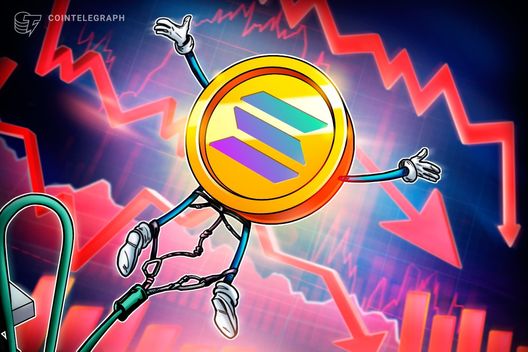In a landscape where financial markets are often swayed by economic indicators, recent data has sparked significant shifts in investor sentiment, particularly in the cryptocurrency sector. Despite a surprise uptick in inflation figures, eyes are now keenly focused on troubling signs emerging from the U.S. labor market. The Consumer Price Index (CPI) report revealed a rise in consumer prices, with the headline rate reaching 2.9% and the core rate at 3.1%, both noticeably above the Federal Reserve’s 2% target.
Traditionally, such inflation metrics would prompt a rethink of interest rate strategies; however, the market response was subdued. Instead, attention pivoted towards the latest jobless claims, which showed an unexpected surge to 263,000—the highest level in nearly four years. This shift in focus highlights growing concerns about an economic slowdown, as investors seem to prioritize insights from the labor market over inflation data.
“Evidence of a slowdown in the U.S. is now appearing in the hard data; it’s no longer just in the sentiment surveys,” said Brian Coulton, chief economist at Fitch.
In response to these labor market developments, crypto markets experienced initial declines but quickly recovered, indicating resilience among select assets. Bitcoin (BTC) and ether (ETH) saw modest gains, but it was the altcoins that truly stood out, reflecting renewed optimism among traders. Notably, Solana (SOL) surged by 11% over the past week, hitting its highest point since January, while dogecoin (DOGE) climbed 17% week-over-week. XRP (XRP) followed suit, marking a rise of 6.6% and breaching the $3 mark.
The unsettling combination of stagnant growth alongside high inflation, a scenario known as stagflation, looms over the economic horizon. If the Federal Reserve opts to cut interest rates to stimulate economic activity, it risks exacerbating inflation, while maintaining current rates amid rising unemployment presents its own challenges. Investors are increasingly anticipating that the Fed may prioritize growth, with projections suggesting a rate cut might be on the way as circumstances become more precarious.
“It’s going to be a rough few months ahead as the tariffs impacts work their way through the economy,” noted Heather Long, chief economist at Navy Federal Credit Union. “Americans will experience higher prices and (likely) more layoffs.”

Impact of Current Economic Indicators
Key points regarding the current state of the economy and its implications for individuals:
- Inflation Rates:
- Consumer prices rose 2.9% in August, exceeding expectations.
- This persists above the Federal Reserve’s target rate of 2%.
- Labor Market Concerns:
- Initial jobless claims surged to 263,000, the highest in nearly four years.
- Market focus has shifted to labor data, indicating broader economic worries.
- Market Reactions:
- Investors are increasingly attentive to jobless claims rather than inflation metrics.
- Bond yields fell below 4%, suggesting market adjustments to the news.
- Cryptocurrency markets reacted positively to jobless claims, showing resilience.
- Stagflation Risks:
- Possible emergence of stagflation with high inflation and stagnant growth presents challenges.
- Policymakers face difficult decisions between rate cuts and inflation control.
- Future Projections:
- Traders anticipate a rate cut could be imminent to support economic growth.
- Expectations indicate potentially rising prices and increased layoffs affecting consumers.
“Americans will experience higher prices and (likely) more layoffs.” – Heather Long, chief economist at Navy Federal Credit Union
Shifting Focus: U.S. Labor Market Concerns Amidst High Inflation
The recent inflation report has sparked waves of discussion as market analysts pivot their attention towards signs of weakening in the U.S. labor market. The implications are significant in a landscape where inflation rates of 2.9% and core rates of 3.1% starkly contradict the Federal Reserve’s ambitions, normally stirring speculation around interest rate strategies. However, investors seem less reactive to inflation data, opting instead to dissect initial jobless claims, which have soared to a level not seen in nearly four years. This duality presents both challenges and opportunities for various sectors within the economy.
Competitive Advantages: One major advantage of this market shift is the potential for alternative assets like cryptocurrencies to gain traction. As the bond market reacts to job data, altcoins such as Solana and Dogecoin have notably surged, attracting investor interest that could benefit the digital currency marketplace amidst traditional financial uncertainty. Industries surrounding crypto exchanges and blockchain technology might see increased activity as investors seek refuge in emerging assets. Furthermore, for the labor sector, a focus on job creation and employment strategies may lead to innovations that foster resilience against unpredictable economic conditions.
Disadvantages: On the flip side, the narrowing focus on labor issues could pose challenges for sectors heavily reliant on stable economic conditions. Retailers and consumer-facing businesses may encounter reduced spending amid inflationary pressures and potential job losses. If the trend towards stagflation continues, these sectors could struggle to maintain profitability, leading to further layoffs and economic contraction. Additionally, policymakers face the daunting task of balancing interest rates—any misstep may intensify inflation while stifling growth.
Target Audience Impact: This economic narrative primarily benefits investors with a higher risk tolerance, particularly those involved in the crypto space looking for growth opportunities. Conversely, individuals reliant on mainstream employment sectors might face heightened anxiety over job security, correlating with potential layoffs. As the Fed grapples with this delicate balance, various market participants must adjust their strategies to navigate the uncertain terrain ahead.















